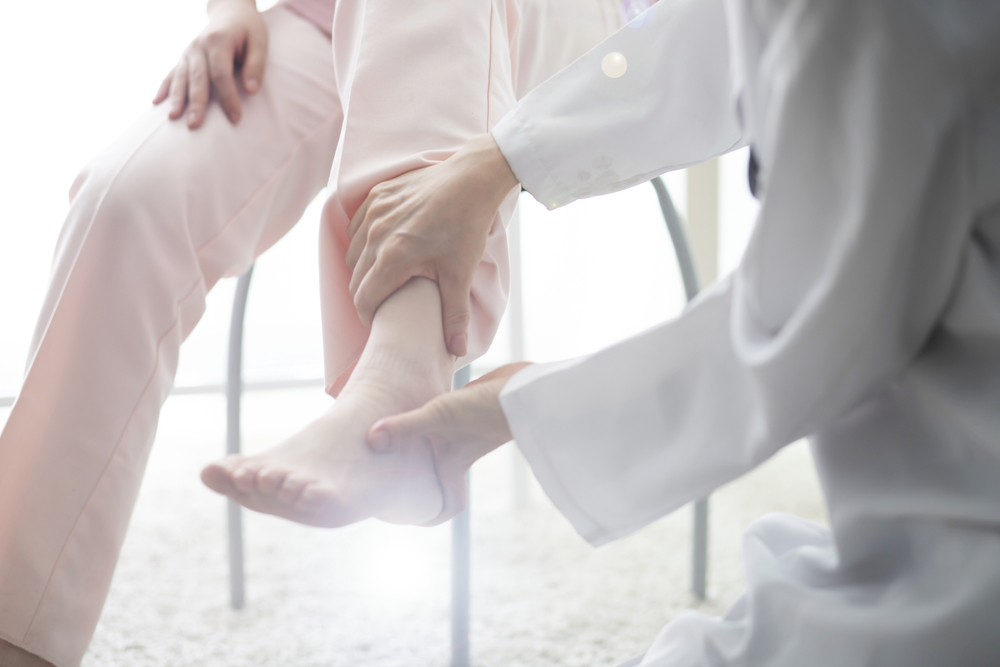Did you know that while there are more than 100 forms of arthritis most of them affect the foot and ankle? This causes pain, stiffness, and swelling that lowers your mobility and affects your quality of life. Luckily, foot arthritis has many treatment options that help you manage your arthritis symptoms and allow you to enjoy your life as you want. Learn treatment options for foot arthritis in this article. Log on to www.doralhw.org for a consultation.
Podiatry treatment options for Foot arthritis
Foot arthritis treatment depends on the severity of your condition. However, initial treatment of foot or ankle arthritis always starts conservatively, which includes many options like:
- Physical therapy:
Physical therapy and foot exercises can be used to lower pain and inflammation, strengthen your muscles, and improve joint mobility and flexibility. Your doctor or physical therapist will create a customized exercise program that meets your needs and lifestyle. It also helps to lower the stress on the arthritic joints and in some cases, may prevent joint pain from worsening. This occurs when movement creates friction between arthritic joints. If your joint pain gets aggravated by physical therapy, your doctor may stop this form of treatment.
- Lifestyle changes:
Some changes in your lifestyle can help you relieve arthritis pain and slow the progression of the disease. These changes include:
- Limit the activities that worsen the condition.
- Change high-impact activities to low-impact activities like swimming and yoga to reduce the stress on your foot and ankle.
- Lose weight to lower the stress on the joints which results in less pain and improved mobility.
- Medication:
Doctors generally recommend nonsteroidal anti-inflammatory drugs (NSAIDs) to lower swelling and pain in arthritis, foot, and ankle joints. It can be taken by mouth and medicines like ibuprofen and naproxen are also available over the counter. If these medications don’t work, the doctor may recommend prescription medicine. Whether you take prescription or nonprescription NSAIDs, it is advised that you should take the right dosage to maintain its effects and lower the risk of side effects like nausea, diarrhea, and headache. Long-term use should be monitored by the doctor. Depending on the cause, your doctor may prescribe disease-modifying antirheumatic drugs (DMARDs).
- Orthotic devices:
For some people, the doctor may recommend wearing an orthotic insert, which provides support and stability to the affected joint. It also lowers pain and stiffness by limiting the movement of foot and ankle joints, allowing one to walk comfortably. These orthotic inserts come in different sizes and levels of stiffness, which easily get placed inside the shoe to support your foot and ankle. Braces can correct abnormal foot mechanics, which lead to the development or progression of arthritis.
- Steroid injections:
The doctor may prescribe corticosteroid injections, which are directly injected into arthritic joints to reduce swelling and pain for 3 to 6 months. It is injected into joint space with a small amount of anesthetic. If arthritis affects small joints, then the doctor may use a live X-ray or ultrasound as a guide to perform this procedure with increased precision. You can return home immediately after treatment. Doctors may use hyaluronic acid injections to improve joint lubrication. However, steroid injections may cause some side effects like nausea and discoloration at the injection site. That’s why doctors recommend using one to 2 injections per year.
If conservative treatment doesn’t work to improve arthritis symptoms, then surgery is recommended. The type of surgery will depend on the type, location of arthritis, and severity. In some cases, more than one type of surgery is required. The most common surgical options are:
- Arthroscopic debridement:
This surgery is recommended if you have mild to moderate arthritis in the big toe. It is used to remove loose cartilage, inflamed synovial tissue, and bone spurs from around the joint. During the procedure, the surgeon inserts a small camera (arthroscope) into your foot or ankle joint to guide miniature surgical instruments. With surgical instruments, the surgeon creates small incisions to remove loose cartilage, ligament, or bone that interfere with bone movement. It is amazingly effective when pain occurs due to contact between bone spurs and arthritis that doesn’t cause significant narrowing of the joint space between the bones. This can sometimes make arthritis joints deteriorate rapidly and removing bone spurs may increase the range of motion of the joint, causing the cartilage to wear away quickly. The surgeon may schedule a follow-up appointment 10 to 14 days (about 2 weeks) after surgery to check the foot healing.
- Arthrodesis (fusion):
This surgery is recommended when a damaged joint causes significant pain and immobility. This surgery can fuse the bones of two or more joints in the ankle, creating one big bone structure with small metal screws or metal plates. During the procedure, the doctor removes the damaged cartilage and uses pins, plates, screws, or rods to fix the joint in a permanent position. Over time, the bones fuse or grow together as they heal.
As the bones no longer move, the pain is usually gone. Most people can go home on the same day. After surgery, you may need to use crutches to walk without putting weight on the fused bones. In addition to crutches, you may need to wear a protective splint for 10 to 14 days (about 2 weeks). Your doctor may examine your foot to check your healing and provide a removable supportive boot. You need to use crutches for another 4 to 10 weeks (about 2 and a half months), depending on the surgery and the boot should be worn for 3 months or longer.
- Total ankle replacement (arthroplasty):
This surgery is recommended if arthritis causes considerable damage to the ankle joint and limits your ability to do everyday activities. In this surgery, the doctor removes the damaged cartilage and bone and positions new metal or plastic joint surfaces to restore joint functionality. This relieves arthritis pain and offers patients more mobility and movement than fusion. Additionally, you can move like before the arthritic joint means less stress is transferred to the adjacent joints, which also lowers the chances of developing adjacent joint arthritis.
However, like any type of joint replacement, an ankle implant may loosen or fail over time. If the implant failure is severe, the replaced joint will need a new implant, which is called revision surgery. Another option is to remove the implant and fuse the joint. This type of fusion is more difficult than normal fusion which is done in the initial procedure because when the implant gets removed, it creates space in the bone that needs to be filled with bone graft to maintain the length of the leg because the new bone may not be strong which increases the risk of nonunion.
Managing foot arthritis can be challenging, however, with the right combination of treatment options for foot arthritis, you can manage your condition well, improve your life quality, and do the things you enjoy.
Need help with arthritis pain, visit our podiatry clinic in Brooklyn to get professional medical help. Call us to book your appointment now!!!!!
Doral Health & Wellness employs Podiatrists with extensive education and expertise. Trauma to the tendons, muscles, and bones of the foot is quite common, as are infections secondary to systemic diseases. It’s not a promising idea to put off seeing Foot Doctor Brooklyn until you’re in a lot of pain. Our address is 1797 Pitkin Avenue, New York, NY 11212. To make an appointment, please call +1-347-384-5690 or send an email to info@mainwebsite.dialysisny.com.






